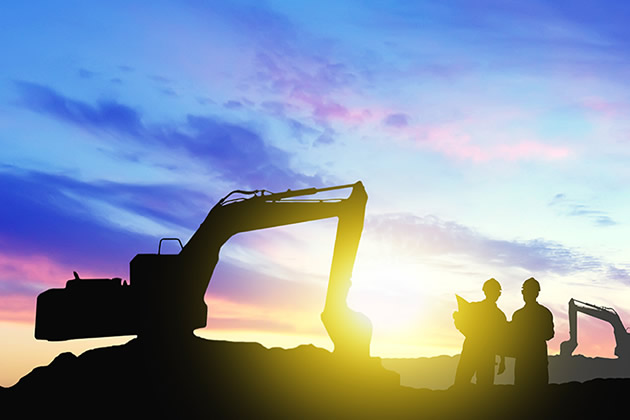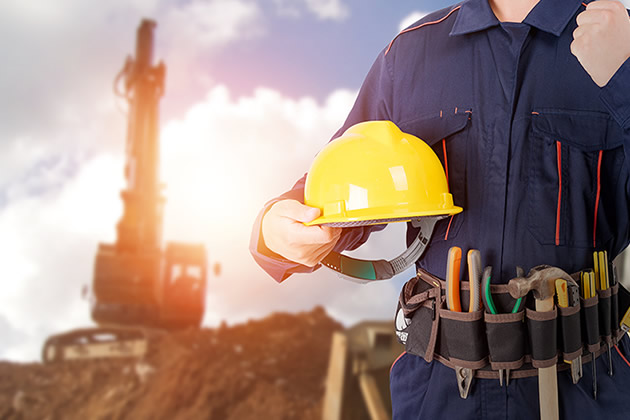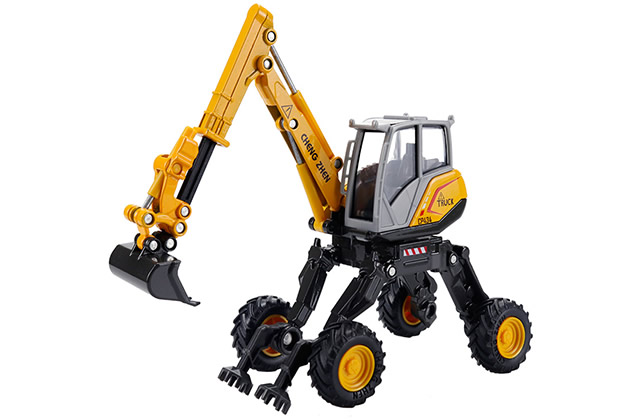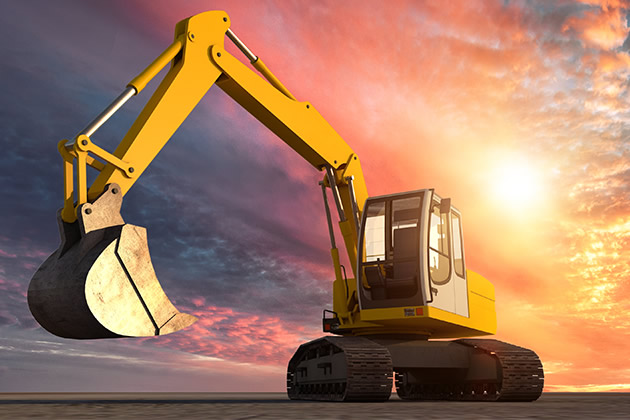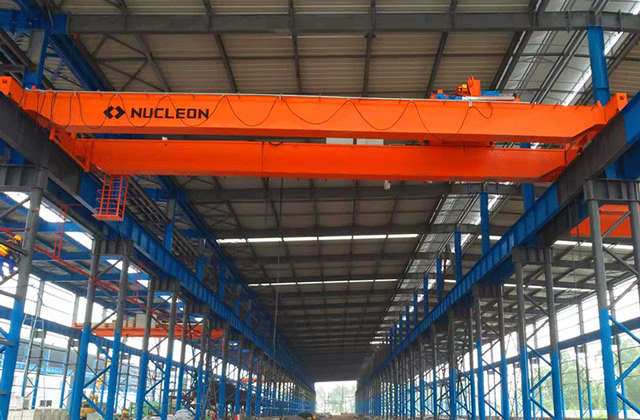1. Preparation work before installation
Foundation strength measurement: Before the equipment is put in place, measure the concrete strength of the equipment foundation. Generally, the equipment can be installed only after the concrete strength reaches more than 60%. The steel ball impact method can be used for small and medium-sized equipment. Before large and medium-sized equipment is installed in place, the foundation must be preloaded. The preloading weight is 1.2 to 1.5 times the sum of its own weight and the maximum weight of the workpiece allowed. The preloading weight should be evenly added to the foundation, and the preloading work should be carried out Until the foundation settlement cannot be observed with the level instrument. The main contents include whether the basic dimensions, center line, elevation, bolt hole coordinates, depth, etc. meet the design and construction requirements. There are unqualified areas to be dealt with during the basic inspection process, and the usual strategies for dealing with basic defects are used.
Basic laying-out: The laying-out can be done after the foundation is accepted and the surface is clean. The vertical and horizontal center lines of the equipment are measured according to the axis of the material building, and the auxiliary baseline is measured and added based on the vertical and horizontal center lines. When setting out the wire, make sure that the ruler is straight and straight, and the measurement is accurate.
2. Construction technology of mechanical installation projects
1. Installation of anchor bolts of mechanical equipment
The connection between equipment and foundation is mainly anchor bolts Connect, align and level the equipment by adjusting the horns, and then grout to fix the equipment to the equipment foundation.
Anchor bolts can be divided into fixed anchor bolts, movable anchor bolts, expansion anchor bolts and bonded anchor bolts according to the buried form. Commonly used They are fixed anchor bolts and movable anchor bolts. Fixed anchor bolts can be divided into three types according to different installation methods: embedded anchor bolts, reserved hole anchor bolts and anchor bolts anchored with epoxy mortar.
2. Installation of shims when installing mechanical equipment
Using shims can adjust the level of the equipment and balance the weight, working load and The pretightening force generated by tightening the anchor bolts is evenly transmitted to the foundation; it can make the elevation and level of the equipment meet the specified requirements and provide sufficient operating space for the secondary grouting of the foundation. There are two types of pads: cast iron pads and steel plate pads. The shapes can be divided into six types: flat pads, inclined pads, open pads, open pads, paired inclined pads with hooks, and adjustable pads.
The installation of equipment without horns is currently only used when the design documents require it. Use jack screws or temporary horns for alignment and leveling of the equipment. After alignment and leveling, When grouting is carried out, the grouting layer plays a load-bearing role. The installation and grouting construction technology should be carried out in accordance with the requirements of the design documents.
3. Equipment is in place when installing mechanical equipment
After the anchor bolts and pads are prepared, the equipment is in place. Before the equipment is put in place, the foundation should be cleaned, and the grouting layer between the equipment base and the foundation should be pitted to ensure the quality of the grouting layer and the foundation.Clean the paint, oil stains and other dirt on the surface to ensure the quality of the combination between the grout layer and the base.
4. Mechanical equipment installation, adjustment and grouting
1. Equipment alignment. Equipment alignment is to use the method of moving the equipment to adjust it to the plane coordinate position specified in the design, that is, to control the deviation of its longitudinal centerline and transverse centerline from the reference line within the range allowed by the design or specification.
2. Equipment leveling. Equipment leveling refers to adjusting the height of the pads to the level specified in the design during installation. The level deviation is controlled within the allowable range specified in the design or specification. The levelness of equipment is usually measured with a level. The inspection should be done on the finishing surface of the equipment.
3. Find the elevation of the equipment. Finding the height of the equipment means adjusting the height of the pads during installation to the height specified in the design. The height deviation is controlled within the range allowed by the design or relevant specifications.
4. Equipment grouting. The grouting between the equipment base and the foundation is carried out after the equipment is aligned and leveled, the anchor bolts are tightened, and each test item is qualified. The grouting material is usually selected by design, and non-shrinkage concrete or slightly expansion concrete should be used.
5. Equipment cleaning and assembly
Cleaning: Cleaning can be divided into rust removal and rust cleaning, grease cleaning, degreasing, hydraulic and lubricating pipeline cleaning, etc.; acid separation There are two stages of washing and rinsing; debugging and operation must be completed before the trial operation of the equipment to ensure lubrication and oil supply for the trial operation of the equipment.
Assembly: First of all, during the installation process of mechanical equipment, the electromechanical equipment assembled on site include: connection and fastening; couplings, clutches, brakes; bearings; transmission belts; chains and Gears; seals and other assemblies. Secondly, the equipment should be assembled after cleaning. There should be no burrs and dirt on the mating and processing surfaces, and the oil circuit should be clean and smooth. During assembly, the lubrication points that need to be filled with lubricant should be filled with lubricant of qualified quality and appropriate quantity according to the design regulations. Finally, assembly operations must not damage the equipment. When assembling large and heavy parts and components, the level or verticality should be adjusted in the suspended state. Guide devices should be installed when necessary, and the lifting and landing should be smooth and accurate. The surface of the assembly should be coated with lubricating oil.
6. Machinery and equipment adjustment, trial operation and completion acceptance
Adjustment and trial operation are important links in comprehensively inspecting the quality of equipment manufacturing and equipment installation, involving There are many majors and personnel, and they must be carefully organized and commanded in a unified manner. The trial operation of mechanical equipment is divided into three stages, single no-load trial operation and no-load linkage trial operation, which are organized and implemented by the construction unit. The trial operation must have the necessary conditions and the correct trial operation method. The load linkage trial operation shall be organized and implemented by the construction unit.
After the mechanical equipment installation project is completed, completion acceptance must be carried out, which is the last process of the installation project. When the project is accepted and accepted, it meets the requirementsAfter agreeing with the agreement, design requirements, and acceptance specifications, the project acceptance should be carried out immediately.
Mechanical equipment installation engineering is the combination of a series of equipment into a set of devices or a production line, thus forming a technical equipment system and ultimately forming production capabilities. Equipment installation accuracy includes the position accuracy between independent equipment required to ensure the correct linkage of the entire device during the installation process, the equipment manufacturing accuracy that can be reproduced by a single piece of equipment through reasonable installation processes and adjustment methods, and the entire unit (set) Accuracy in three aspects, including the operating accuracy of the equipment during operation.
3. Key points in the maintenance of construction machinery and equipment
In order to smoothly implement engineering construction projects, relevant construction machinery maintenance work should be done well. The details are as follows:
1. Strictly implement the current mechanical maintenance system and do regular maintenance work to ensure that the mechanical equipment is always in the best working condition. If some mechanical equipment has a high usage rate or a high failure rate, you can choose the tracking inspection method. When abnormal operation is found, it needs to be shut down in time, and professional maintenance personnel will conduct detailed inspections and adopt effective maintenance methods. In daily work, when mechanical equipment is operating, the current status of mechanical lubrication should be regularly checked. If there is a problem, lubricating oil needs to be added immediately to avoid mechanical failure due to lubrication problems.
2. In the process of maintaining machinery, you should not only pay attention to big problems and ignore small problems. You should do all the maintenance work to avoid operating the machine with diseases, minimize the loss of mechanical performance, and prevent damage to the project. Progress has been seriously affected. At the same time, during the mechanical construction process, equal attention should be paid to maintenance. Regular inspections should be carried out according to the degree of wear and tear of mechanical equipment components, and prevention and maintenance work should be carried out to prevent serious waste of resources and costs caused by forced maintenance. It is required to apply advanced maintenance to daily mechanical maintenance, so that engineering repair vehicles can be reasonably configured and machinery can be maintained in a timely manner, thus achieving the purpose of reducing maintenance costs, shortening time and extending the service life of mechanical equipment.
3. In order to maximize the utilization rate of construction machinery and equipment, the machinery management system should be established and improved. At the same time, the machinery management system and management structure must be improved, and reasonable requirements must be established. A reward and punishment system can enhance the awareness of safe operation of machinery operators and enhance their sense of responsibility, so that they can better care for equipment, reduce human operating errors, avoid serious losses of machinery, and prevent casualties and property losses.
IV. Conclusion
In summary, to achieve project quality and efficiency goals, mechanical equipment installation and maintenance must be done well. It is required that engineering machinery and equipment be used rationally and that all maintenance and repair work be done in a timely manner. Only in this way can the rapid development of the engineering construction industry be promoted. During the installation and maintenance process of mechanical equipment, workers are required to improve their installation and maintenance skills and implement quality control throughout the entire operation process. While standardizing the installation process of mechanical equipment, it is necessary to increase maintenanceOnly in this way can we ensure the quality of the project and promote the rapid development of the enterprise.
If the website content violates your rights, please contact us to delete it。



